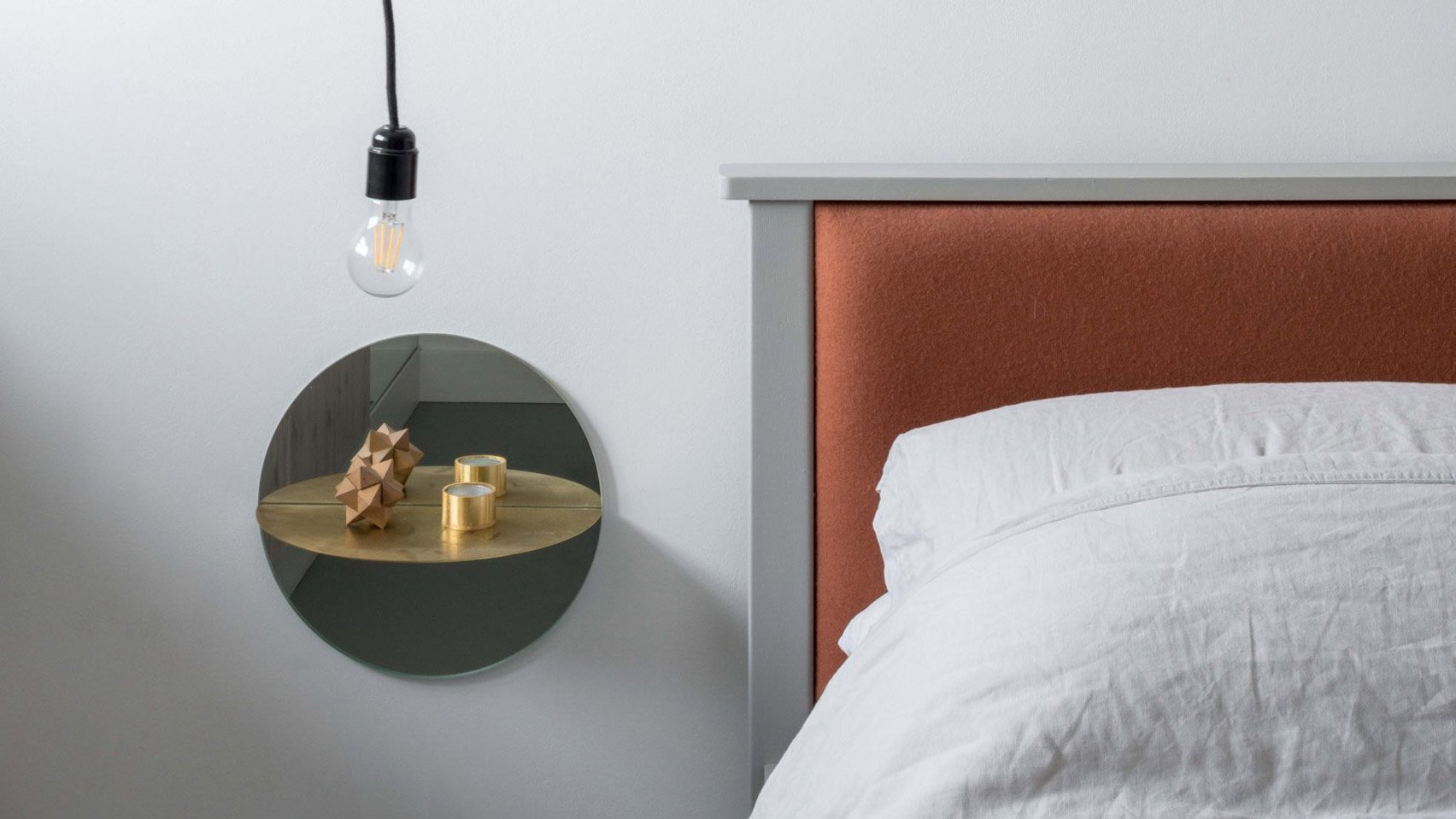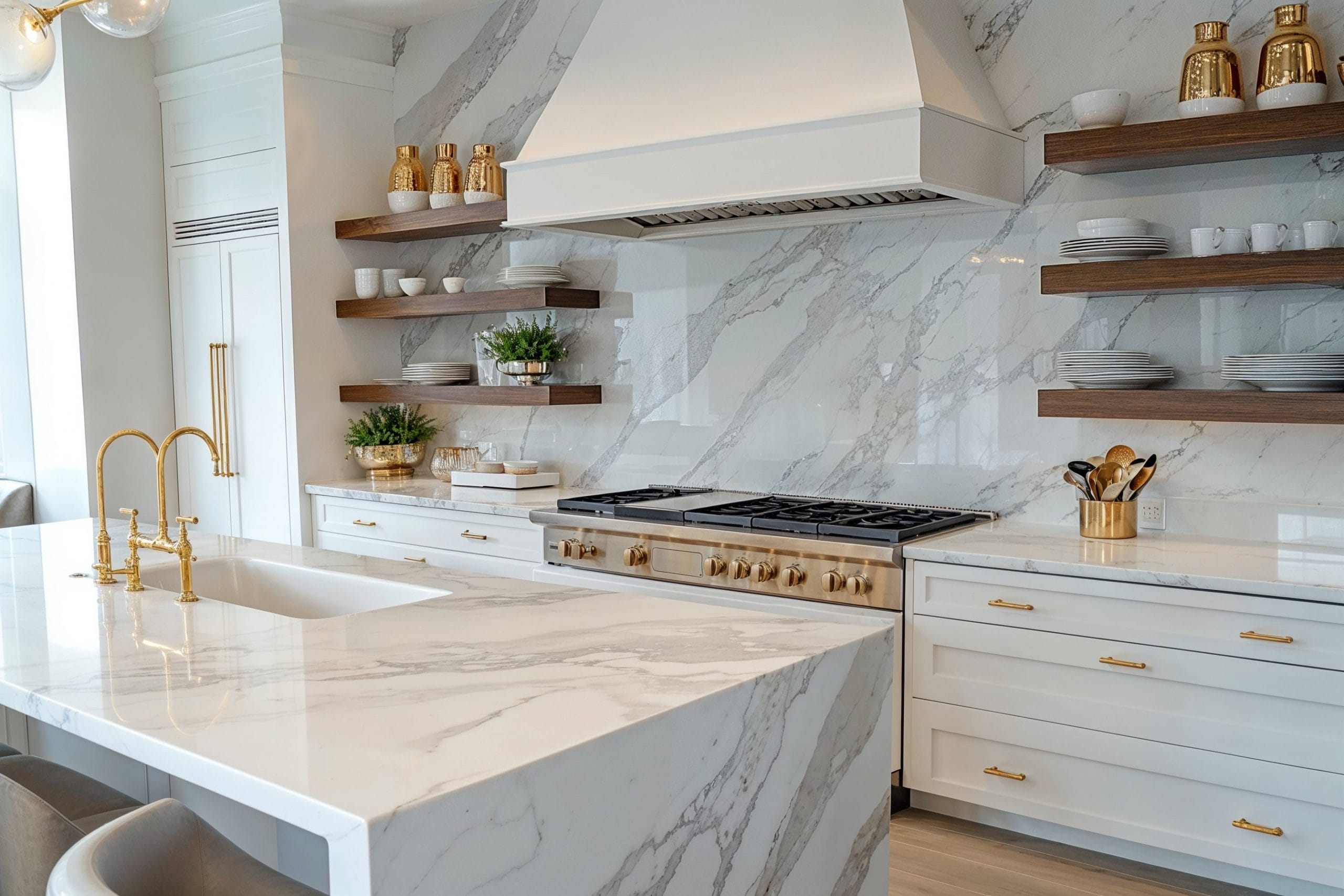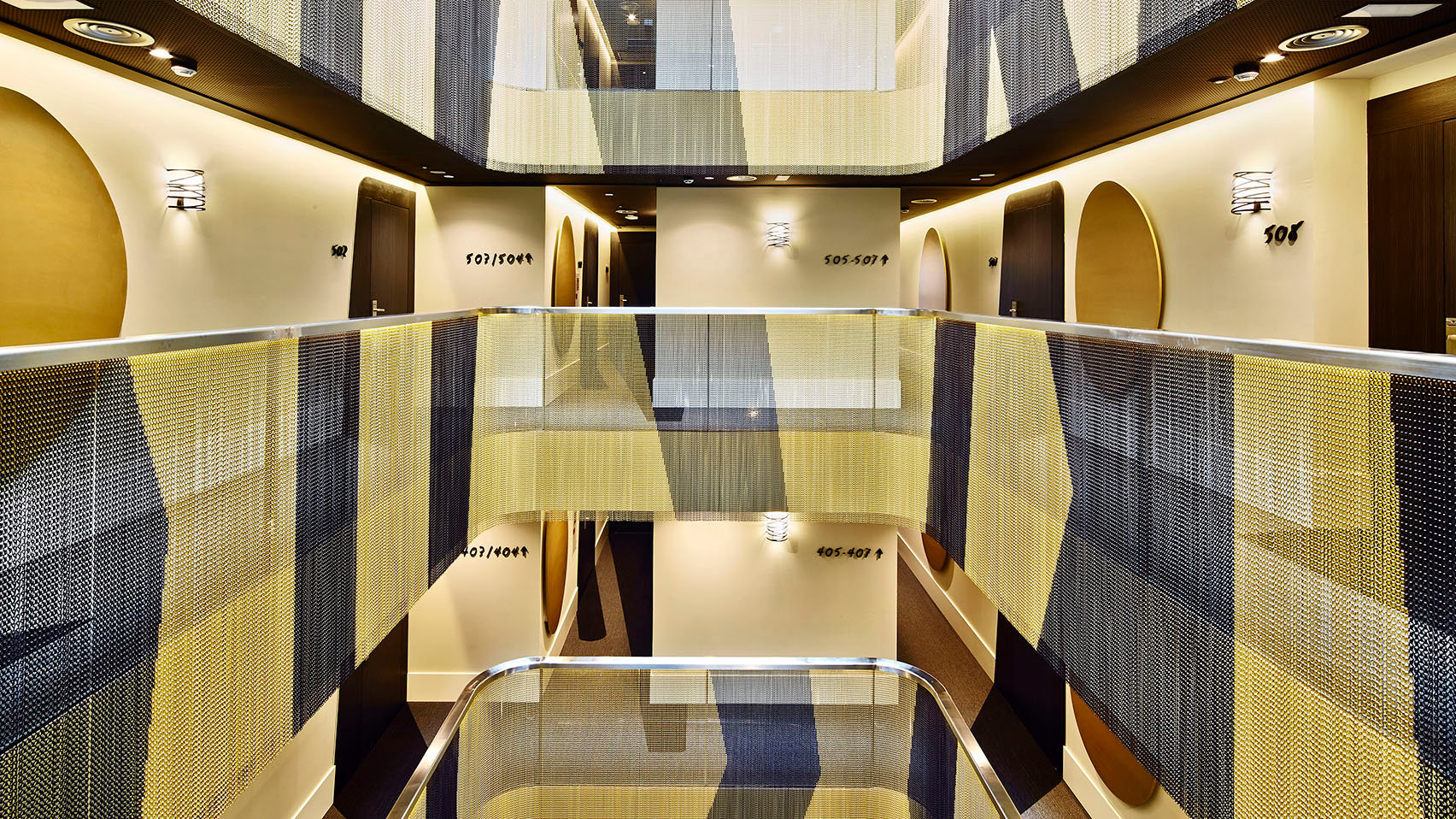We independently select these products—if you buy from one of our links, we may earn a commission.
Storage, style, and functionality play a big role in the quality of your bathroom. In a perfect world, renovating your bathroom would consist of fun, simple tasks like laying a fresh coat of paint or trying out a new shower tile. But sometimes it takes a lot more than that, as was the case with Jill Sevelow’s recent bathroom renovation.
Jill’s apartment was built in 1926, and the bathroom definitely looked like it had suffered through decades worth of damage. As she describes it, it had old, crumbling tile on the floors and walls, a “pitiful” vanity and clunky medicine cabinet, and dated hardware. Nothing about the bathroom was aesthetically pleasing. “I painted the walls mauve and threw a chandelier up there and tried to make the ugliness go away,” Jill says, but she still didn’t love the look of the bathroom she had to use every day.
The catalyst for a full change came when Jill’s upstairs neighbor’s toilet leaked, causing enough wall and ceiling damage that everything had to be removed — and when experts came in to repair the wall and ceiling, they found a leaking pipe that had been letting wastewater drip into the walls. So, “BE GONE, all of the plaster walls, I said! It’s time,” Jill says.
In the bathroom renovation, the plumbing and wall repairs obviously came first, so the new tile, toilet, sink, and medicine cabinet that Jill ordered sat for 46 days before being installed. “That 46 days meant I changed the bathroom color choice three times,” Jill says. Ultimately, a soft gray (Benjamin Moore’s “Gentle Gray”) was the color that felt right.
Since the bathroom’s footprint is small, Jill figured out ways to make it more functional. She slightly altered the layout to make it more practical for daily use by buying a more narrow toilet and a wider console sink to replace the old wood vanity. (She also chose to go with a wider, but sleeker, medicine cabinet over the sink that offers enough storage to make up for what she lost in giving up the vanity.)
On the floors, Jill added hex tile in a floral pattern; for the shower walls, she picked classic white subway tiles — a huge upgrade from the crumbling tile that had been in place before. A new shower head and tub faucet in a satin nickel finish complement the new sink. Jill also added in a simple white light fixture in place of the large chandelier she’d installed before.
The whole bathroom’s vibe is a little bit vintage, a little bit modern — a perfect fit for this 1920s apartment that’s living a 21st century life. Jill had to do a lot of browsing to get there, though: “I Pinterested the hell out of bathroom ideas for a good month before purchasing,” she says.
In total, the entire project cost Jill $8,800. This covered all of the supplies, materials, fixtures, finishes, and labor. And while she made some splurges along the way, Jill has no regrets: “I am absolutely in love with my bathroom,” she says.











